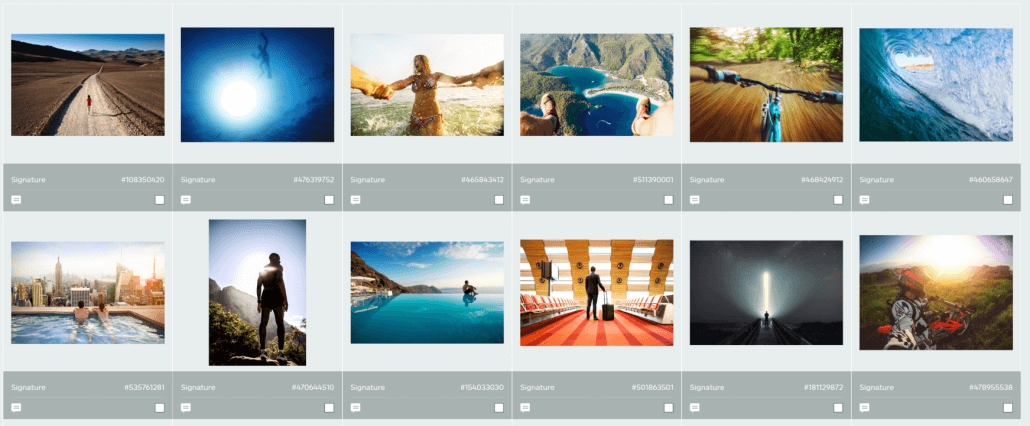Want to Take Stock Photos like a Pro? 7 Tips You Must Know

Want to Take Stock Photos like a Pro? 7 Tips You Must Know
We have had a lot of questions revolving around stock photos after Andrew posted his How I made $1.88 Selling Stock in 10 Days article. One question we have seen a lot is, how do you take a good stock photo? Or, why aren’t any of my photos selling? I thought this was a great opportunity for another article on stock photography.
This article is intended to answer those two questions so you can start making some true passive income through stock photography.
Either if you are looking to just get started or you are an already established stock photographer, these tips can help you get started or improve your sales. If you are struggling with sales, one or more of these tips could be the reason as to why.
1. What’s Trending
You could have the best photograph in the world but if it is about a particular subject that is not in high demand, you will not get many sells.
Selling stock photos is a lot like selling anything else. Let’s say a sporting goods store is looking to sell a new high tech soccer ball that tracks metrics for the player. The retailer will not imediately go out to start manufacturing a million new soccer balls. First, they start off with some market research to see if there is a demand for the new soccer ball.
You need to do the same thing for the subject matter that your stock photo is going to target.
Luckily, both Shutterstock and iStockPhoto both display trending searches on their home pages. These lists will help you start to get some ideas on what people are searching for and purchasing.

2. Is Your Target Market Over Saturated?
An oversaturated market is easy to find within the stock photography world. These are usually the easiest photographs to capture such as clouds, flowers, animals, and so on.
If you try to make money off of stock photos that focus on one of these then you are not going to make any money. Your photograph is going to get buried under the already established cloud photographs.
Instead, find niches under these broad categories. Maybe, you could specialize in cloudscapes during major thunderstorms. Or you could specialize in animals who are playing in the water.
Finding a niche can be tricky but is not impossible.
I start by thinking about a broad category then work my way down to a more granular niche. I think of it as a breadcrumb such as – Animals -> Playing -> Water -> Swimming -> Diving Underwater -> Photo Idea: Take a photo from underneath the waters surface looking up at the animal.
3. Be Unique
Now, after all of your research, you should know what subject your photographs should focus on. Now it is time to go take some photos.
I want these new photos to really pop out on the page for your potential buyers. This is not going to happen if you use the same point of view (POV) as all of the other photographers.
Within each subject matter you chose, take a look at your competition and how they framed their photos. While you are researching start thinking how you can make your stock photo more unique than the competition.
As an example, take a look at these photos of the Gateway Arch in St. Louis on Shutterstock. Notice that the top five are all taken from basically the same POV. Even though these are very pretty photos, they are all essentially the same. When I was in St. Louis, I wanted to take a photo of the Gateway Arch from a different POV. The hotel I happened to be staying in had a high vantage point that looked over the monument. Taking advantage of this unique overlook, I was able to take the fifth photo that comes up in the Shutterstock search results.
Do not follow the crowds for your stock photography. Make your own trends. Be Unique.

4. Image Size
Make sure your images meet the guidelines of Shutterstock or iStockPhoto. The bigger the resolution your image is, the better. That way your photo can be offered for as many possible sizes for your potential buyers.
Shutterstock requires that your stock photography uploads be at least 4 megapixels in size. They accept either JPEGs or TIFFs.
iStockPhoto (also GettyImages) require the photograph to be at least 3 megapixels in size. They allow you to upload as big as 256 megapixels! The biggest thing they stress is no upsizing of your stock photos. This can really decrease the quality of the photograph.
5. Editing
This goes a long with what is trending. As you are researching about what you should take a photo of, you should also be studying the trending styles to mimic.
I know, I said you should make your photo unique. I was talking about being unique the way you frame and shoot your photo. Editing is different.
The way your photos look after editing should have a particular look and feel that the market demands. This might require you to reedit and resubmit your stock photos after the trends change.

6. Tagging
Your stock photos need to be found amongst all of the other millions of photographs uploaded. Using the proper tags will help your photos be found by potential customers.
When tagging, try to be as thorough as possible so your photo covers a wide footprint. Do not just put ‘dog’, ‘brown’, ‘animal’ as your only tags. The photo will never be found. Try to be as broad and detailed as possible such as: ‘dog’, ‘brown’, ‘animal’, ‘happy’, ‘running’, ‘grass’, ‘tennis ball’, ‘chocolate lab’, ‘playful’, ‘playing’, ‘sunny day’.
If you are struggling with coming up with tags. Research what others have used. I have done this for every stock photograph I have uploaded.
7. Be Honest With Yourself
This one can be tough on people but is something that needs to be asked. Is your photo really worth paying money for? Do you really think that your photograph is good enough that someone would use for a marketing piece?
If your answer is yes, then go ahead and upload.
If your answer is no, that is fine! Instead of being sad, think about how you can improve your photograph. Think how you can go back out, reshoot it, and make it better. This happens to me all of the time! I will go out and take a photograph thinking it is amazing. When I get back home to take a look at it on my computer screen discovering that the photo looks horrendous!
This happens to me all of the time! I will go out and take a photograph thinking it is amazing. When I get back home to take a look at it on my computer screen discovering that the photo looks horrendous!
When in doubt. Ask someone you know and who will be honest with you if they would buy the photo.

No matter how delicious your food was, do not worry about uploading every single dinner you have taken.
Conclusion
One big pattern you should see within this article is research!
Do your research before you decide to take a photo so you can figure out if it is actually in demand or not. Do your research so you take unique photos. Do your research so you can make trendy edits. And finally, do your research so you can make the proper tags.
Not only do these tips apply to stock photography but they will apply to earning money through several different avenues with your photography. Learn about these other avenues to earn more money in my 5 Simple Ways – How to Sell Photos Online article.










Very nice article and I especially liked, “Best Honest with Yourself”. Bad photography can’t be avoided because we all need to start somewhere and even those of us who have been doing it for a long time, mightn’t have such great skills in reality, so we need to really honest. Just get out there and take the picture again and again if necessary till it is good! People want quality, not something that is secondhand.